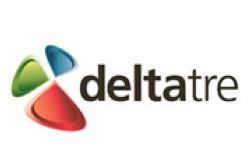
With England, Wales and Northern Ireland all qualifying for Euro 2016, football fans in the UK will have an exciting start to a summer of sports. We then have Andy Murray to look out for at Wimbledon and Jessica Ennis at the Rio Olympics. For those not travelling to France, Rio, or simply stuck at work, online live streaming on multiple devices is going to be next best thing.
Going on trends from the last few years, fans are expected to consume much more content than for the same events four years ago. Forecasts from Mintel suggest that UK streaming video subscription revenues will rocket from £437 million to £1.17 billion between 2014 and 2019.
A look back
According to the BBC, the 2012 London Olympics was its most successful online event ever, attracting a record-breaking 55 million global browsers to BBC Sport online (cumulative reach) making it the broadcaster’s first truly digital Games.
There were record-breaking online viewing figures, with 55 million global and 37 million UK browsers visiting the BBC Sport site in total across the Games, and an average of 9.5 million global and 7.1 million UK browsers per day. The previous record for a single day was 7.4 million global and 5.7 million UK.
If the above numbers were to act as an indication of what to expect four years on, broadcasters and federations need to be prepared to deliver for what promises to be yet another record-breaking summer for online sports.
So what are the challenges that may arise from this anticipated spike in viewership and what should all broadcasters be aware of and prepared for?
A limited Internet
As online video goes mainstream and expectations rise, it gets more and more difficult to meet user demands. This is partially due to the fact that traditional broadcasting is very stable and reliable. It has set a certain standard to which the mainstream viewer has grown accustomed. Very rarely does a television broadcast fall off the air, and it certainly doesn’t buffer.
The main challenge, however, is the limitation of the internet. In order to reduce load times, we have to reduce the distance information travels. This is where Content Delivery Networks (CDNs) come into play. CDNs make content more accessible to people further away by connecting content at different locations closer to the end user. However CDN’s need to increase delivery capacity – some are limited because of the 10s of thousands of private networks. This means it is very difficult to deliver an optimal experience to a user with a single CDN setup. By combining multiple CDN providers into one network, you get access to their aggregate power and reach thereby avoiding outages.
Needless to say, any delivery network can suffer outages whether due to issues with the video origin/cloud or CDN. Of course, while it is somewhat rare for entire cloud platforms, ISPs and CDNs to go down (even though they do occur), regional outages happen and local outages are frequent. In short, it means it is very difficult to deliver an optimal experience to a user with a single CDN setup.
High stakes
Clearly the stakes are high. Broadcasters and federations have spent months, if not years, planning, preparing and testing platforms to cope with the expected spikes in demand – a demand that will appear out of thin air and last for a few weeks before disappearing.
Preparing to deliver large sporting events is a unique undertaking for a number of reasons:
– Failure is not an option – with the large amount of money at stake, the brand values and reputation attached to the event, and the huge amount of public interest, failure is not an option and could be catastrophic.
– No extensions granted – whether you are ready or not, the event will start as scheduled. There is no scope for delays and no soft launch options.
– Testing has its limitation – it is very hard, if not impossible, to properly simulate a live event on the scale of the Olympics or the major football tournaments.
– Minimal recovery time – if a failure occurs, the nature of the events is such that recovery time is minimal. If you don’t recover quickly, a large part of the event is lost within days and completely lost within weeks.
Five tips to stay ahead of the game
With broadcasters aiming to deliver the best possible experience to every user while serving a mass audience and providing enough redundancy to overcome major, minor or micro outages, needs to address all the deficiencies in the delivery chain.
– Be aware of traffic conditions for all users in real time��– the first step is to be aware of traffic conditions for every user in real time. This is called Real User Monitoring (RUM), where measurements that are taken at the actual point of consumption. Based on this data, you know the most efficient route for any user to get to your content. It also gives you a global overview of current traffic conditions worldwide, including all elements of the delivery chain.
– Build full redundancy into the delivery chain – knowing current conditions is not enough unless you create options for routing, so the next step is to ensure active-active, ideally geographically dispersed, redundancy in your system. This includes multiple origins with multiple CDNs.
– Add traffic management – with the RUM data and multiple delivery options, you are now in a position to make intelligent decisions on how to deliver the content to end users, while ensuring the best possible performance. To make these decisions efficiently and in real time, you need to add a traffic management system, that will direct users to the optimal route at any time by retrieving your content based on flexible criteria.
– Design for spikes and rising expectations – the days are gone when digital offerings could be happily passed off as an afterthought. For some users, especially millennials, digital devices are the primary screen for consuming content. And, thanks to an increasing amount of sophisticated platforms, expectations are rising, both in terms of choice and quality. In addition, the very nature of sporting events means any design needs to take into account the inevitable spikes, while providing top quality to a mass audience, which is why it is always a good idea to consider multiple delivery platforms.
– Expect the unexpected – another key element is to plan for the expected and prepare for the unexpected. This includes the assumption that anything that can fail will fail. It is not a question of if, but when and how. This is why any platform should seriously consider full redundancy, including geographical regions where possible, across your encoding, ingest, origin and delivery platforms. This is the best way to ensure 100% availability of the live stream in real-time.
By Julien Coulon, co-founder and general manager, Cedexis







